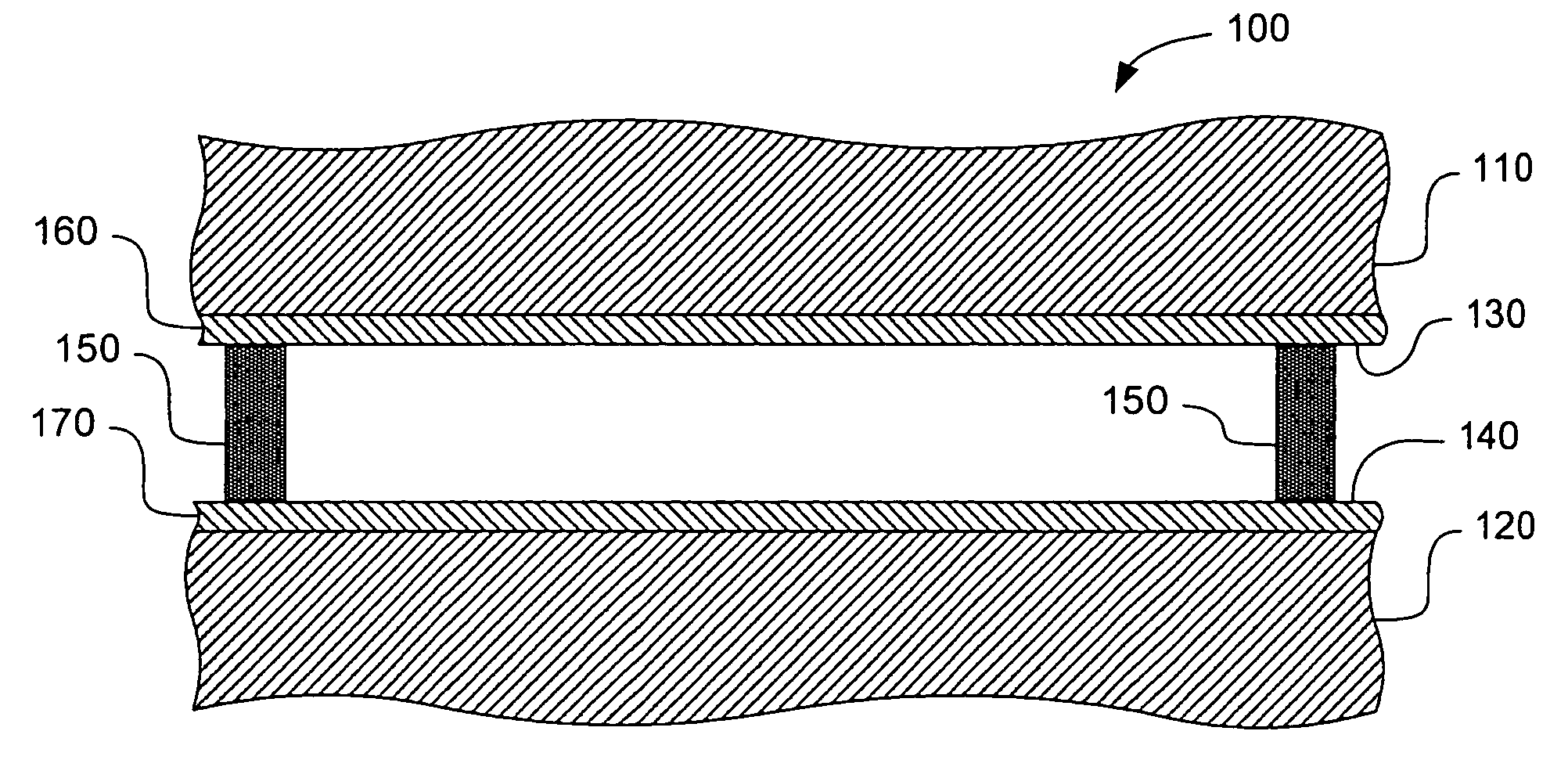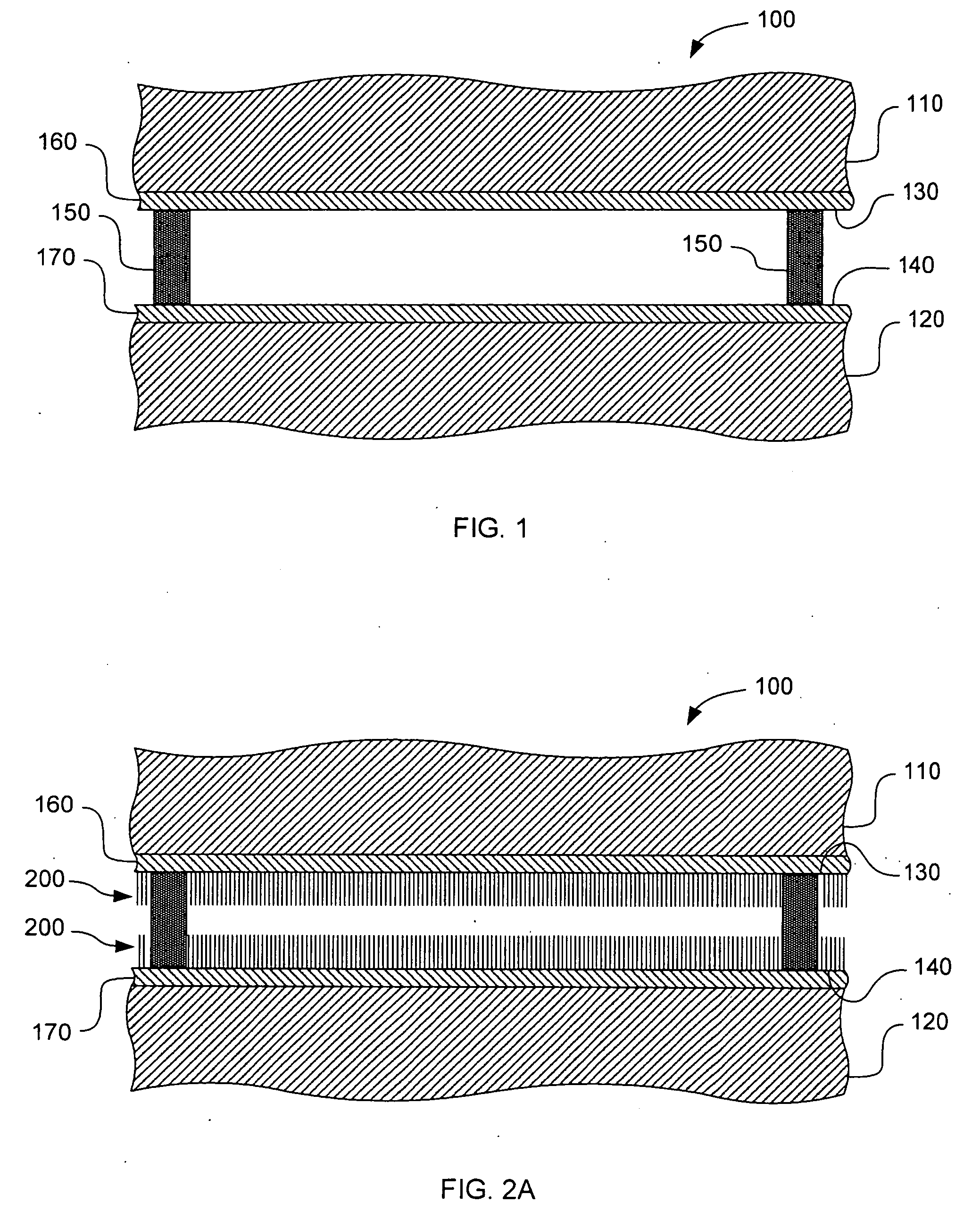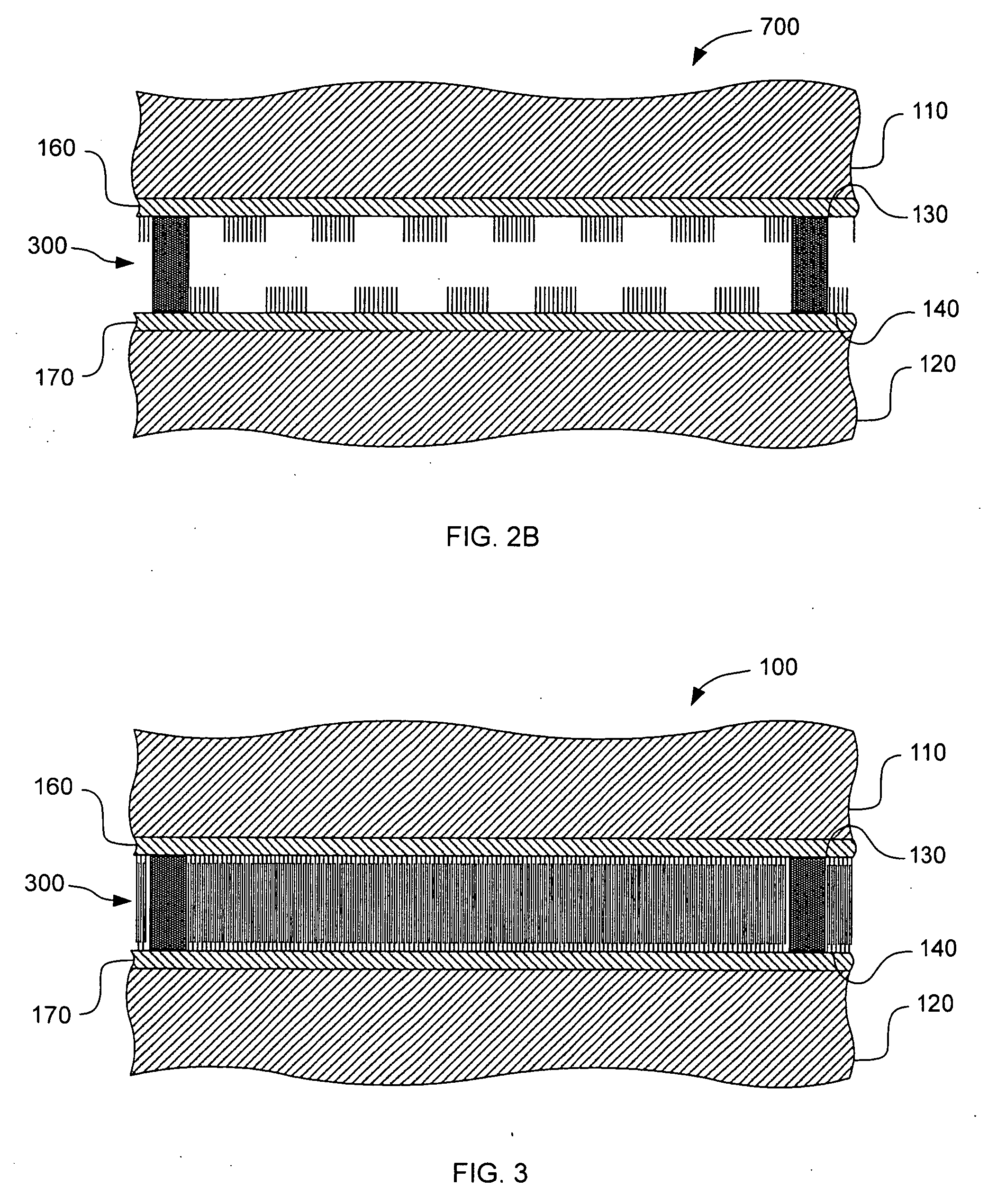Growth of carbon nanotubes to join surfaces
a carbon nanotube and surface technology, applied in the field of material science, can solve the problems of thermal grease, large heat generation of devices that consume large amounts of power, and messy thermal grease, and require additional packaging
- Summary
- Abstract
- Description
- Claims
- Application Information
AI Technical Summary
Problems solved by technology
Method used
Image
Examples
Embodiment Construction
[0023] The present invention provides methods for joining two objects through the growth of carbon nanotubes from one or both of two opposing surfaces of the two objects. Where the carbon nanotubes are grown from both of the opposing surfaces, the carbon nanotubes can interdigitate to secure the two objects together. As used herein, “interdigitate” means to become intertwined, enmeshed, entangled, interlocked, or at a minimum, adhered together by Van der Waals forces. In some instances the interdigitated carbon nanotubes form a bond that is analogous to the bond formed by the hooks and loops of Velcro.
[0024] Besides providing a mechanical bond, the interdigitated carbon nanotubes can also provide excellent thermal and electrical conductivity between the objects. Additionally, the carbon nanotube growth can be patterned on either or both of the opposing surfaces. In some of these embodiments the carbon nanotubes can be grown to either partially interdigitate or not interdigitate, de...
PUM
| Property | Measurement | Unit |
|---|---|---|
| melting point | aaaaa | aaaaa |
| melting points | aaaaa | aaaaa |
| melting points | aaaaa | aaaaa |
Abstract
Description
Claims
Application Information
 Login to View More
Login to View More - R&D
- Intellectual Property
- Life Sciences
- Materials
- Tech Scout
- Unparalleled Data Quality
- Higher Quality Content
- 60% Fewer Hallucinations
Browse by: Latest US Patents, China's latest patents, Technical Efficacy Thesaurus, Application Domain, Technology Topic, Popular Technical Reports.
© 2025 PatSnap. All rights reserved.Legal|Privacy policy|Modern Slavery Act Transparency Statement|Sitemap|About US| Contact US: help@patsnap.com



